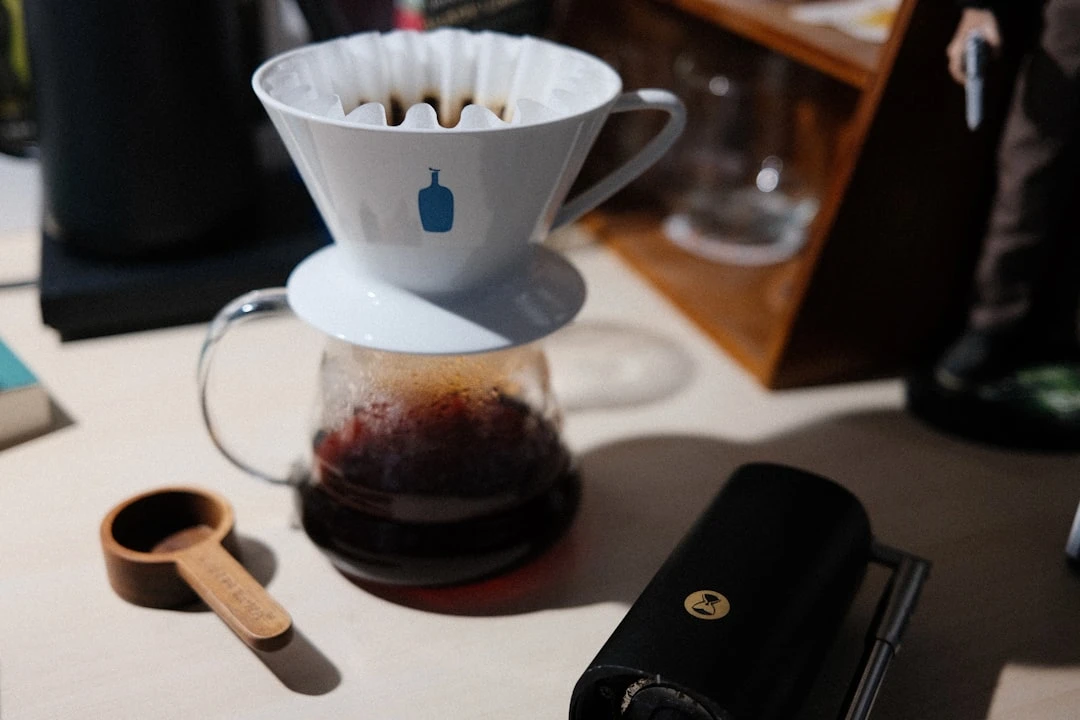How to Steam Milk Like a Pro

Did you know that 73% of coffee shop customers say the quality of steamed milk makes or breaks their latte experience? I learned this the hard way after serving my friends what I thought was a perfect cappuccino, only to watch them politely sip through foam that looked more like soap bubbles than silky microfoam.
Steaming milk is both an art and a science that transforms ordinary milk into the creamy, velvety foundation of your favorite coffee drinks. Whether you're trying to recreate that perfect café latte at home or just want to impress your morning guests, mastering milk steaming will elevate your coffee game dramatically!
What You Need to Steam Milk Properly
Getting the right equipment makes all the difference between professional-looking microfoam and a disappointing mess. I've made plenty of mistakes with subpar tools, so let me save you some frustration.
The most important piece is your steaming wand or milk frother. If you have an espresso machine, you're already ahead of the game. But don't worry if you don't – there are several alternatives that work surprisingly well. I've used everything from French presses to handheld frothers, and while they each have their quirks, they can all produce decent results with the right technique.
Your milk pitcher is equally crucial. A stainless steel pitcher with a spout gives you control over pouring and helps conduct heat so you can feel the temperature. I made the mistake of using a regular glass measuring cup for months before investing in a proper pitcher. The difference was night and day – suddenly I could actually control where my milk went instead of creating abstract art on my countertop.
Choosing the Right Milk for Steaming
Not all milk is created equal when it comes to steaming, and this was probably my biggest early mistake. I used to grab whatever was cheapest at the store, wondering why my foam always fell flat or tasted weird.
Whole milk is your best friend here. The fat content creates that rich, creamy texture we're after, and it steams more forgivingly than lower-fat alternatives. I've tried everything from skim to heavy cream, and whole milk consistently gives the best balance of flavor and texture.
But here's where it gets interesting – the freshness of your milk matters more than you might think. Milk that's been sitting in your fridge for a week won't foam properly, no matter how perfect your technique is. The proteins break down over time, making it nearly impossible to create stable microfoam. Trust me, I've wasted countless mornings trying to steam milk that was past its prime.
Non-dairy alternatives have their own personalities. Oat milk steams beautifully and has become my go-to for guests who can't have dairy. Almond milk is trickier – it tends to separate if you overheat it, which I learned after creating what looked like cottage cheese in my pitcher.
Step-by-Step Milk Steaming Process
Alright, here's where the magic happens. I'm going to walk you through the exact process I use every morning, including the mistakes I made so you can avoid them.
Start with cold milk – about 4-6 ounces in your pitcher. I used to think more milk meant better results, but overfilling your pitcher is a recipe for disaster. The milk needs room to expand, and trust me, you don't want to explain to your roommate why there's milk foam covering half the kitchen.
Insert your steam wand just below the surface of the milk. This is crucial – too deep and you won't get any foam, too shallow and you'll create a volcano of hot milk. I spent weeks getting this positioning wrong before someone finally showed me the sweet spot.
Turn on the steam at full power. Here's where most people mess up – they start with low pressure thinking it's gentler. Wrong! You want that initial burst of steam to start incorporating air immediately. The sound should be a sharp hissing, not a gentle whisper.
Keep the tip near the surface for the first few seconds while the milk expands. Once you've got about 50% more volume, plunge the wand deeper to heat the milk without adding more air. This is the difference between microfoam and macrofoam, and it took me embarrassingly long to figure out.
Temperature Control and Timing
Temperature is absolutely critical, and I can't stress this enough. Milk proteins start breaking down around 140°F, but the sweet spot for most drinks is between 140-150°F. Go higher and you'll get that scalded taste that ruins everything.
I used to guess at temperature, which resulted in either lukewarm drinks or burnt-tasting milk. Now I use the side of the pitcher as my thermometer – when it becomes too hot to hold comfortably, you're usually right around 140°F. Some people swear by actual thermometers, and honestly, that's probably the smarter approach if you're just starting out.
The timing aspect is trickier to nail down because it depends on your equipment and the amount of milk. Generally, the whole process should take about 30-45 seconds. Less than that and you probably haven't heated the milk enough; more than that and you're likely overheating it.
Common Mistakes and How to Fix Them
Let me share some of the spectacular failures I've had over the years, because learning from my mistakes might save you some frustration.
The biggest mistake I see people make is moving the pitcher around too much. I used to think I needed to swirl and dance with the thing, but stability is key. Keep that pitcher steady and let the steam wand do the work.
Another common issue is not purging the steam wand before and after use. I learned this lesson the hard way when I served my sister a latte that tasted like yesterday's milk. The condensation in the wand can water down your milk and introduce off-flavors.
Oversteaming is probably the most heartbreaking mistake because you can't undo it. Once you've created those big, fluffy bubbles instead of smooth microfoam, you're starting over. I've thrown away more milk than I care to admit because I got impatient and kept steaming past the point of no return.
Advanced Techniques for Perfect Microfoam
Once you've mastered the basics, there are some advanced techniques that'll take your milk steaming to the next level. These took me months to develop, but they're game-changers once you get them down.
The key to silky microfoam is something called "polishing." After you've finished steaming, give the milk a few gentle swirls in the pitcher. This breaks up any remaining large bubbles and creates that glossy, paint-like consistency that pours beautifully.
Another technique I wish I'd learned earlier is the "stretch and roll" method. During the first phase when you're incorporating air, you want to create a whirlpool in the milk. This helps distribute the foam evenly and prevents those annoying layers of foam sitting on top of liquid milk.
Temperature consistency is an advanced skill that separates the amateurs from the pros. I practice monitoring the temperature by touch constantly, even when I'm using a thermometer. Eventually, you develop an intuitive sense for when the milk is ready.
Troubleshooting Your Steamed Milk
Even with perfect technique, things can go wrong. I've encountered pretty much every possible milk steaming disaster, so let me help you diagnose and fix common issues.
If your milk isn't foaming at all, check your steam pressure first. Weak steam won't incorporate enough air to create foam. Also make sure your milk is fresh – old milk simply won't foam properly, no matter what you do.
Large, chunky bubbles instead of smooth microfoam usually means you introduced air too aggressively or for too long. The solution is to work on your timing and positioning. Keep that wand tip just barely under the surface and only for the first few seconds.
Milk that tastes burnt or has a weird texture has been overheated. This is irreversible, unfortunately. The proteins have denatured and there's no going back. Start over with fresh, cold milk and pay closer attention to temperature.
Using Your Perfectly Steamed Milk
Now comes the fun part – actually using your beautifully steamed milk! The way you pour can make or break even perfect microfoam, and I've definitely had my share of pouring disasters.
For lattes, you want to pour steadily from a moderate height, aiming for the center of your espresso. Start with a thin stream to penetrate the crema, then bring the pitcher closer to the surface as you fill the cup. This creates those beautiful layers that make café drinks so appealing.
Cappuccinos require a different approach. You want more foam relative to liquid milk, so pour more gently and use a spoon to hold back some of the liquid while letting the foam flow out. I used to think cappuccinos were just smaller lattes, but the foam-to-milk ratio makes a huge difference in both taste and texture.
Don't forget about timing here either. Steamed milk starts separating almost immediately, so use it within a minute or two of steaming. I've made the mistake of steaming milk and then getting distracted by something else, only to come back to separated, lukewarm disappointment.
Conclusion
Mastering milk steaming has honestly transformed my entire coffee experience at home. What started as a frustrating process filled with wasted milk and disappointed guests has become one of my favorite parts of my morning routine.
Remember, everyone's equipment is different, so don't get discouraged if your first attempts don't look like café-quality drinks. I probably went through a gallon of milk in my first week of practice, and that's totally normal! The key is understanding the principles – proper positioning, temperature control, and timing – then adapting them to your specific setup.
Most importantly, don't forget to clean your equipment properly after each use. Milk residue can affect the taste of future drinks and create hygiene issues. A quick rinse and purge of your steam wand goes a long way.


